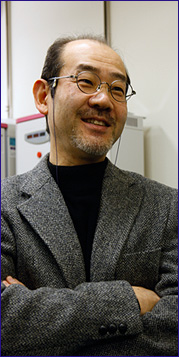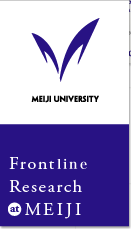

How to utilize cloning technology is important
Cloning technology can be utilized to resolve various issues in livestock production. The meat we consume as food is produced by breeding stud bulls or stud pigs, but even if superior studs are developed through breed improvement, it is very difficult to continuously maintain these studs. Performance as livestock will deteriorate if crossbreeding continues and risks of diseases will increase as well.Livestock primarily share with humans crops that become livestock feed and food consumed by humans. Better use of state-of-the-art technologies is important to further enhance production efficiency and produce high-quality livestock.
Cloning technology is currently used for genetic manipulation of animals. For example, research currently is underway to produce livestock that are suited to the environmental factors of respective lands or for dairy use, including cattle, sheep and goats, which produce milk that contains ingredient sources of medicine. Cloning technology is making progress every day.
Aiming to prepare for future millennia by contributing to the sustainability of biodiversity
At my laboratory, we are conducting research on frozen storage of animals’ fertilized eggs and sperm. In January 2010, we successfully managed the births of the world’s first piglets from frozen stored fertilized eggs of premium Tokyo X brand pigs. With this initiative, I am confident that such technologies are capable of contributing to the sustainability of biodiversity in addition to livestock production.Original breeds of pigs that existed from early times are currently on a declining trend in line with developmental and economic advancement on a global basis. The reality is that the original breeds of pigs that were previously thought to have existed in approximately 500 varieties are being lost, one after the other. As breeding diversity is lost, it becomes more likely that animal species will suffer devastation from climate change and disease. However, such risks can be avoided if cryopreserved embryos are stored in preparation for the future of humankind.
I believe the technology of pig production using embryo cryopreservation is part of a mission to prepare for future millennia by conserving biodiversity. I hope that a global structure will be established in which embryos will be cryopreserved as a gene bank of scarce and endangered species/breeds of livestock animals.
In the not-too-distant future, this technology will be put to practical use in medical treatment
Pig somatic cell cloning technology, which is one of my fields of specialization, has a significant mission applying to biomedical research. Although joint research is currently being carried out with a Tokyo University research team for creating a human pancreas within a pig’s body, I consider that such initiatives can also contribute to regenerative medicine and conquer incurable diseases.For example, one of our goals is to provide organs through developing transplantable organs using pigs, thereby addressing patients who suffer from incurable diseases that can only be recovered from through organ transplantation. Development of treatment methods for incurable rare diseases that severely afflict patients will make a great deal of progress, through research using genetically modified pigs recapitulating pathologic conditions of the diseases. Also, knowledge acquired through such initiatives can be utilized to improve patients’ quality of life (QOL).
I recently had an opportunity to exchange opinions with pediatric doctors who conduct research into congenital diseases. It is theoretically possible to duplicate diseases by mimicking patients’ genetic disorders into pigs. In this respect, I believe that in the not-too-distant future, cloning technology will have practical applications in medical treatment.
Possibility of creating new industries
Japan may give foreign students an impression of being an industrially advanced nation. However, Japan is also developed in terms of agricultural technology since the country is blessed with a natural environment including a well-defined four-season climate and a diverse range of available food. For instance, Japanese beef such as Kobe beef won worldwide eminence as premier beef.The cloning technology research in which I specialize is also making progress in terms of medical treatment applications. At the same time, it has the potential to create a new industry integrating outcomes of agricultural and medical science by incorporating engineering technologies in which Japan takes immense pride.
As a matter of course, since genetic engineering implies manipulation of life, quality control of research must also be strictly carried out. Nonetheless, such a meticulous approach is truly Japan’s forte in industrial fields. Consequently, we need to fully exert what is considered to be the utmost strength of the Japanese in the bioscience field. Otherwise, I don’t think successful results can be achieved in life manipulation or creation of life and other relevant initiatives.
Research has progressed from the stage of challenging the creation of a clone and is now shifted toward addressing what we can use cloning technology for. At this point in time, there are approximately 10 or fewer institutions worldwide, including my laboratory, which are successfully achieving results in pig cloning technology. I expect students to take advantage of my laboratory for studying technologies that will become fundamental for opening up the future of the human species.
Profile
Dr. Hiroshi Nagashima has been a professor at the Laboratory of Developmental Engineering, Department of Life Sciences, School of Agriculture, Meiji University in Kawasaki, Japan, since 2004.His research interests include somatic cell cloning of pigs, production of genetically modified pigs for translational research and cryopreservation of embryos.
After earning respective bachelor and Ph.D. degrees in Agricultural Science from Meiji University (1978) and The University of Tokyo (1984), he was a research scientist at Nisshin Flour Milling Co. Ltd. from 1984 to 1993; a lecturer at Nippon Veterinary and Animal Science University from 1989 to 1991; a research fellow from 1991 to 1993 and a senior lecturer from 1997 to 1999 at the Department of Obstetrics and Gynaecology of The University of Adelaide in Australia; a senior research scientist at BresaGen Ltd.’s Reproductive Biology Unit in Australia from 1993 to 1996; a research fellow at the Biomedical Research Center of Osaka University Medical School from 1997 to 1999; a lecturer at the Graduate School of Agricultural and Life Sciences of The University of Tokyo from 1998 to 2005; and an associate professor in the Department of Life Sciences, School of Agriculture, Meiji University from 1999 to 2004.
Dr. Nagashima also serves as Director of the Meiji University Intellectual Property and Promotion of Business and Community Relations Headquarters, and Managing Editor of the Journal of Reproduction and Development.









